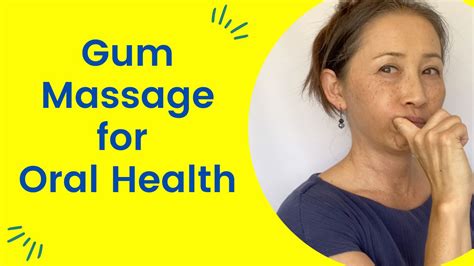Gum Massage: The Ultimate Guide for Healthy Gums and Teeth
Maintaining optimal oral health involves more than just brushing and flossing. Gum massage, a surprisingly simple yet effective technique, plays a crucial role in promoting gum health, preventing gum disease, and strengthening teeth. This comprehensive guide delves into the benefits, techniques, and precautions associated with gum massage, empowering you to take control of your oral hygiene.
What are the Benefits of Gum Massage?
Gum massage offers a multitude of benefits for your oral health. Regular practice can lead to:
- Improved blood circulation: Gentle massage stimulates blood flow to the gums, delivering essential nutrients and oxygen to the gum tissues. This enhanced circulation promotes healing and strengthens the gums, making them more resistant to infection.
- Reduced gum inflammation: Massage can help reduce inflammation and swelling in the gums, a common symptom of gingivitis (early gum disease).
- Prevention of gum disease: By improving circulation and reducing inflammation, gum massage helps prevent the progression of gingivitis to more serious forms of gum disease like periodontitis.
- Enhanced gum tissue health: Regular massage helps keep the gums firm and healthy, reducing the likelihood of gum recession.
- Stress reduction: The gentle act of massaging your gums can be surprisingly relaxing, helping to alleviate stress and promote overall well-being.
- Improved oral hygiene: Massage can help dislodge food particles and plaque that may be trapped between the teeth and gums, complementing your regular brushing and flossing routine.
How to Perform a Gum Massage: Step-by-Step Guide
Before starting, ensure your hands are clean. You can use your fingers or a soft-bristled toothbrush for the massage.
- Gentle Pressure: Apply gentle pressure with your fingertip or toothbrush to your gums. Avoid excessive pressure that could cause damage or discomfort.
- Circular Motions: Use circular motions to massage your gums. Focus on each tooth individually, massaging the gum tissue around it.
- Upward and Downward Movements: In addition to circular motions, you can also use gentle upward and downward strokes along the gum line.
- Duration: Massage each section of your gums for about 1-2 minutes. Aim for a total massage time of 5-10 minutes daily.
- Frequency: Ideally, perform gum massage once or twice daily, ideally after brushing and flossing.
What are the Best Tools for Gum Massage?
While your fingers are perfectly adequate, several tools can enhance your gum massage experience:
- Soft-bristled toothbrush: A soft-bristled toothbrush can provide a gentle yet effective massage. Ensure the bristles are soft enough to avoid irritation.
- Interdental brushes: These small brushes are designed to clean between teeth and can also be used for gentle gum stimulation.
- Gum massager: Specialized gum massagers are available, offering varying levels of stimulation. Choose one with soft bristles or tips.
What if My Gums Bleed During Gum Massage?
Some bleeding is normal, especially when you first start massaging your gums. If you have gingivitis, your gums might be more sensitive and bleed more easily. However, if the bleeding persists or is excessive, stop massaging and consult your dentist. Persistent bleeding could indicate a more serious underlying issue.
How Often Should I Do a Gum Massage?
Aim for once or twice daily, ideally after brushing and flossing. Consistency is key to achieving the full benefits of gum massage. Make it part of your regular oral hygiene routine.
Can Gum Massage Help Prevent Gum Disease?
Yes, gum massage is a valuable tool in preventing gum disease. By improving circulation and reducing inflammation, it helps maintain healthy gum tissues and reduces the risk of gingivitis and periodontitis.
What if I Have Gum Disease, Can I Still Massage My Gums?
If you have gum disease, it's crucial to consult your dentist or periodontist before starting a gum massage routine. They can assess the severity of your condition and advise on the appropriate techniques and precautions. Self-massage might not be suitable for advanced gum disease.
Is Gum Massage Safe?
When performed correctly, gum massage is generally safe. However, avoid excessive pressure, and stop if you experience significant pain or discomfort. Consult your dentist if you have any concerns.
Conclusion: Incorporate Gum Massage into Your Oral Hygiene Routine
Gum massage is a simple yet effective addition to your oral hygiene routine. By incorporating this technique into your daily care, you can significantly improve your gum health, prevent gum disease, and contribute to a healthier, brighter smile. Remember to start gently and consult your dentist if you have any concerns or existing gum conditions. Your gums (and your smile) will thank you for it!

